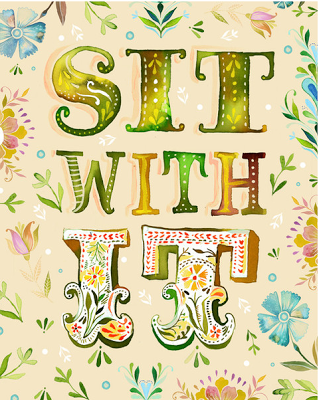I have been thinking about the point where the body and the mind split.
Usually I would never try to do that. I’m all about bridging the two, integrating, getting everything in balance.
But lately I’ve been in an interesting space, where pulling the two apart is necessary. And it’s hard to find that point.
When I think about “grounding,” historically for me it has meant bringing me back to the present, getting my brain remembering where I am, what’s going on, and focusing on the here and now – rather than spinning years into the past or miles into the hypothetical future. Grounding for me has been like meditation. Focus on the here and now. Focus on the 5 senses. Focus on what you can see, hear, and feel. Grounding for many I know means taking a deep breath when your brain is taking you to places you don’t want to go. It’s taking a minute in your office to center, or going for a walk during lunch. Grounding – almost literally – is bringing yourself back to the ground, rather than floating off into the abyss of memories, thoughts, worries. I would imagine that many of you reading this are nodding, saying that you do this all the time, even if you aren’t consciously participating or realizing it.
Lately, though, none of those strategies have worked for me. And it’s easy to immediately react with why not, why isn’t it working, let me run through everything I’ve tried, why am I still anxious, why am I still going over past events and memories, why am I stuck on certain thoughts, why why why. (Shockingly, that doesn’t seem to help.) What I’ve realized is that all of my brain/mind grounding strategies are continuing to work wonders. I do them without even having to think about it, more often than not. But it’s my body that needs grounding. And that’s harder, because that’s not something you can control with thoughts. It’s also harder to talk about, for me. While I have spent the last few years sharing the thoughts and inner workings of my brain, anything to do with body feels vulnerable and scary to share.
Grounding techniques help my brain stop spinning. But they don’t stop the anxious pit in my stomach, or the tornado that whirs around in it. They don’t open up my chest so I feel like I can breathe again. They don’t stop the pounding in my eyes and in my head. I believe that we all have experienced something traumatic, or extremely emotional in our lives. Thinking about that event in your own life, can you now see that difference in how you’ve experienced it over the years – sometimes ruminating, thinking, obsessing, remembering, grieving, in your brain, but other times feeling it, literally, in your stomach, in your heart, in your head, in or on your body? Whether it was the death of the loved one, a car accident, a traumatic injury, a sexual or physical assault, an invasive medical procedure, a disease, an intense altercation at work, an emotionally-taxing event – it goes on and on, and it all had an effect on both brain and body. And just as you might keep reliving it in your brain, you might keep reliving it in your body, too.
So. How do I ground my body? What do I do in those times when I’m happily going about my day, and my brain is quiet and calm, focused on work and life, but my body is stuck?
I actually don’t know.
Yoga helps. Bodywork helps. Massage helps. Sometimes exercise helps.
But the rest, I’m still figuring out.
Does this make sense? Can you relate? What do you do to ground your body?

